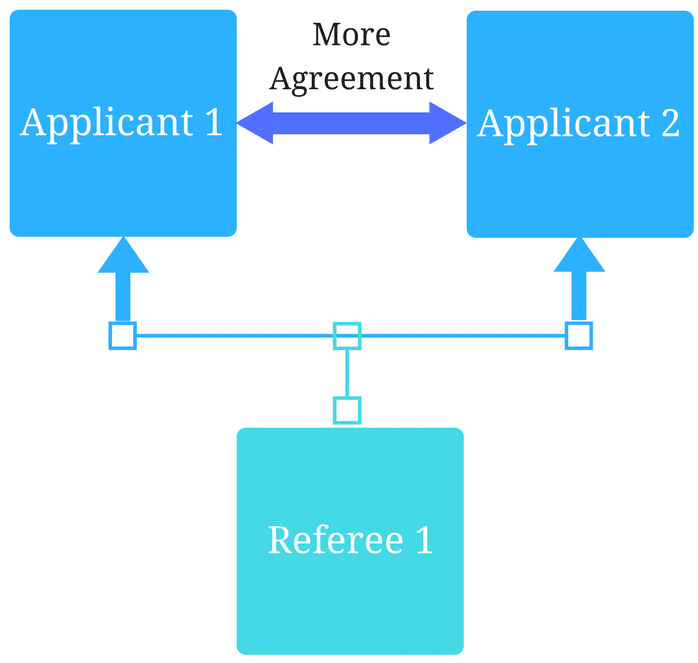6 curriculum management best practices for accreditation

May 1, 2020
More than ever before, accreditation requirements for educational institutions are focused on maintaining standards around curriculum.
Using the Liaison Council on Medical Education (LCME) and the American Association of Medical Colleges (AAMC) as examples, this guide highlights some current trends surrounding curriculum standards and offers 6 ways to improve your school’s curriculum management using software.
Top curriculum-related trends:
- Accreditors are asking for more proof and more rigor around standards. This means schools have to track and report on more information in more detail and at more frequent intervals than before.
- Curriculum committees are held to a higher standard than ever before. This means you need the right tools to adjust your curriculum on a more frequent basis as the needs of society change.
- Schools now need to demonstrate a process of continuous improvement. Curricula need to be updated on a regular, ongoing basis instead of reviewed and modified once every few years.
- Accreditors are pushing for standardized, comparable data. Initiatives such as the AAMC’s Curriculum Inventory and Reports (CIR) project are now in place to facilitate a more frequent transfer of highly detailed curriculum information that can be compared between schools.
As a result of these trends, best practices for curriculum management are changing. Instead of leaving your curriculum static for years between accreditation reviews and conducting a major overhaul months before an accreditation site visit, consider adopting the following strategies to improve your curriculum on an on-going basis.
1. Give all stakeholders a view of the curriculum
Students, residents, faculty, and administrative staff should have easy access to their learning objectives, course schedules, assessments and learning materials. Each stakeholder group requires access to different types of information, and at different access levels. When you consider the number of faculty, students and courses at your school, this challenge can be daunting, especially when stakeholders are often located in different geographic areas. Nevertheless, accreditation standards now require access to much of this information.
Consider these LCME standards, for example:
- The ED-3 standard requires that all medical students, faculty, residents and others know the objectives of the medical program.
- The ED-24 standard requires that residents who teach must “receive a copy of the course or clerkship/clerkship rotation objectives.”
With a curriculum management system, you can enter and store all of your curriculum information within a central system. You can then set up different access levels and customize views for unique audience levels. As a result, all of your stakeholders will be able to access the information they need, when they need it, and you will be able to export and report on the data.
2. Identify redundancies and gaps in your curriculum
The LCME’s ED-37 standard mandates that all schools must monitor their curriculum, including the content that is taught in each discipline. Curriculum management software lets you track objectives, content, and learning activities for every course, and easily identify redundancies and gaps. This allows you to demonstrate the comprehensive nature of your system and access specific curriculum details for accreditation purposes.
3. Track and report on your different teaching types
The LCME’s ED-5-A standard requires that “the methods of instruction and assessment used in courses and clerkships will provide medical students with opportunities to develop lifelong learning skills.” A curriculum management system lets you link educational and assessment methods back to individual learning experiences, and then report on this data in a way that showcases the types of teaching that make your school unique.
4. Demonstrate that your curriculum covers “hot topics”
The LCME’s ED-10 regulation requires that in addition to basic science and clinical subjects, your curriculum include “behavioral and socioeconomic subjects.” These subjects fall into the category of “hot topics” or “issues of the day” and are usually of interest to government agencies. A curriculum management system lets you track and report on where and when these hot topics are taught in your curriculum.
#5. Reduce time spent entering curriculum inventory data
Based on our experience with the now-retired CurrMIT system, administrative staff would take eight to 10 hours to enter curriculum data from just one course. And this doesn’t even factor in maintenance time. By replacing the tedious manual process with curriculum management software, you can enter and update curriculum information one time and upload it easily to external systems such as the AAMC’s Curriculum Inventory (CIR).
6. Get more done than just curriculum mapping
While some traditional curriculum mapping tools let you access your curriculum sporadically to add information or make adjustments, these systems are used very infrequently. For continual improvement to your curriculum management process, consider integrating curriculum mapping activities with daily functionality used by staff and students, such as curriculum scheduling. When you use a system as a part of your day-to-day operations, you will be much more likely to keep your curriculum map up to date and avoid costly efforts to quickly produce curriculum mappings for accreditation.
How prepared is your school?
As accreditation standards around curriculum continue to tighten, how well is your school keeping up with the changes? Acuity’s curriculum management tool can make it easy to track and report on learning outcomes and curriculum data, allowing you to keep up with evolving trends in competency-based education. For a complimentary consultation about your school’s curriculum, contact us at consultation@localhost.
Related Articles

How interviews could be misleading your admissions...
Most schools consider the interview an important portion of their admissions process, hence a considerable…
Reference letters in academic admissions: useful o...
Because of the lack of innovation, there are often few opportunities to examine current legacy…
